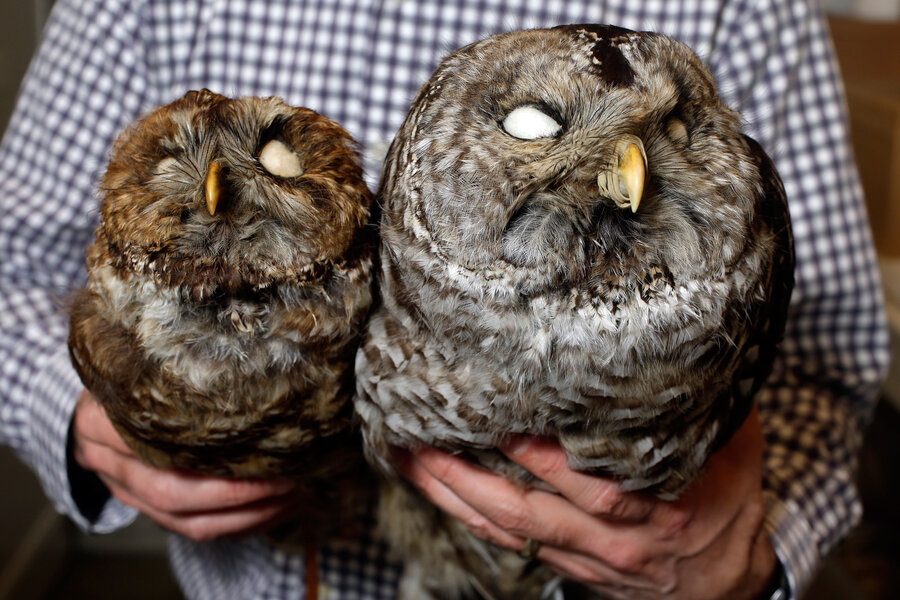Owl wars: Biologists kill one bird to save another
Loading...
Shooting owls is hardly a typical part of the conservation toolbox, but biologists in California's northern forests are doing just that.
With permits from the US Fish and Wildlife Service, Lowell Diller, a biologist working with Jack Dumbacher, curator of the California Academy of Sciences Department of Ornithology and Mammalogy, has been mapping parts of the forest where both owl species live. In some areas, Diller lured and shot the barred owls, but others he left alone.
The biologists will soon publish their research in the Journal of Wildlife Management and Wildlife Monographs, but they told Natalie Jacewicz of the San Jose Mercury News that the results are clear: killing some owls helps other owls live.
Dr. Diller said he wants this research to inform conservation policy going forward, but he admits he has mixed feelings about the implications.
"By the time I'm done with this, I'm going to need a lot of therapy," Diller told the San Jose Mercury News.
The reasoning behind the killing is complex. The barred owl is a larger and, it seems, more aggressive bird species, and is native to the Eastern United States. The barred owl has moved from the East, through Canada, and down into northern California.
The barred owls are technically invasive, and the Northern Spotted Owl is an endangered species, and a controversial one at that. After years of battles with lumber companies that want the owl's habitat to stay open for logging, the conservationists are loathe to lose the spotted owl to a bigger bird.
"Can you imagine letting something like that go extinct?" Diller asked the San Jose Mercury News. "It's really not acceptable."
The US Fish and Wildlife Service admits killing other owls is an extreme solution to the conservation situation:
The U.S. Fish and Wildlife Service has identified competition from barred owls as one of two main threats to the northern spotted owl’s continued survival (habitat loss is the other). We are conducting an experiment to test the effects of removing barred owls from certain areas of spotted owl habitat to see if it would benefit spotted owls. Removal of some members of a common species to protect or recover a rare species is only used in the most serious conservation situations.
This has happened before, but with much less visible – and popular – species. Biologists deloused black-footed ferrets during a captive breeding program designed to reintroduce the species after it became extinct in the wild, wrote Dolly Jorgensen of Luleå University in a study for the journal Conservation Biology.
A parasitic louse that preyed on the California Condor was also removed from the bird to aid its now-famous comeback from near-extinction. The ferrets and the condors benefited; both the ferret louse and the louse Colpocephalum californianus are presumed extinct as a result.
"It is unfortunate that these programs did not account for the parasite's conservation," Dr. Jorgensen wrote in the study.
Jorgensen advocated for the preservation of even parasitic species alongside their more popular, endangered hosts. She wrote that certain parasites are "native components of biodiversity" that should be considered in conservation strategy. Her position stands in contrast to the proposal in California, in which some owls must die so others can live, simply because they inhabit the same controversial neighborhood.
“It’s sort of a no-win situation,” the National Audubon Society’s California director of bird conservation Andrea Jones told the San Jose Mercury News. “We’re not advocating for the killing or against the killing.”






